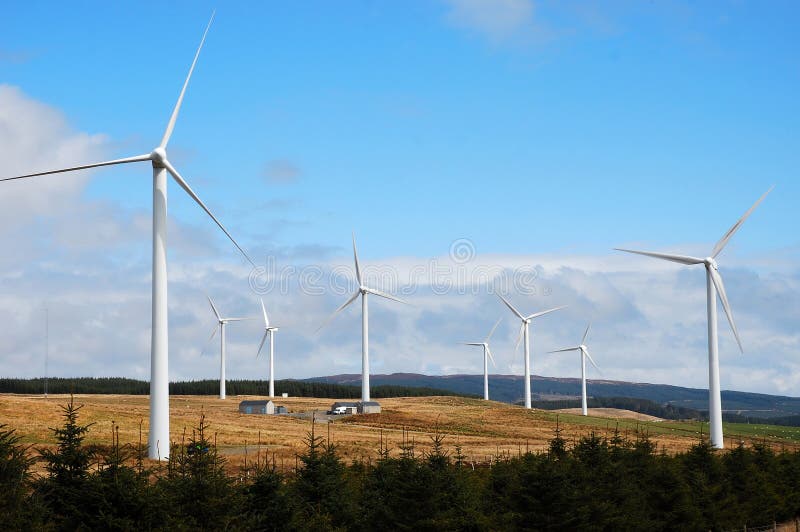
Not a Lot of People Know That By Paul Homewood | March 31, 2022
Can renewable energy ever replace fossil fuels?
Fossil Fuels v Renewable Energy?
Let me start by stating that I am not pro or anti anything. In a free market, the best technologies, solutions and products automatically come to the fore, without the need for subsidies, regulations and mandates.
If renewable energy is all that is promised, it will do the same.
There is of course no doubt that the cheap, abundant and reliable energy provided by fossil fuels has transformed society and made all of us better off than ever before in so many ways.
We get rid of them at our peril!
So far, our transition to renewable energy in the UK has been painfully slow and extremely expensive. Wind and solar power still supply only 3% of the UK’s total energy consumption after two decades of trying. Meanwhile, according to the Office for Budget Responsibility, subsidies for renewables were expected to cost £12 billion in 2021/22. This actually understates the reality because it does not include all of the indirect costs involved in grid balancing and so on, meaning the true cost is probably over £15 billion.
It is of course true that the recent rocketing of gas prices has reset the agenda. But it is important to note that the current price does not reflect the cost of extracting gas. It is the result of an imbalance in supply and demand. Such imbalances have occurred before, and a normally functioning market would quickly increase gas production, driving prices back down to historic levels.
But even before those price rises, it was being claimed that wind and solar power were cheaper than fossil fuel. However such claims fail to take into account the additional system costs imposed by their intermittency.
Moreover, claims that offshore wind costs are now down to around £40/MWh simply are not supported by the evidence. The claims are derived from the prices agreed for Contracts for Difference, the government subsidy mechanism. However, wind farms are under no legal obligation to actually take up these contracts; they are effectively only options.
Detailed examination of actual company accounts continues to show that the capital costs for building offshore wind farms has not fallen significantly in recent years, and that the true running costs are probably around £100/MWh. To put this into perspective, historically wholesale electricity prices have been under £50/MWh.
Solar power has certainly come down in cost in recent years, but the technology is a dead end here in the UK, because of our latitude. In winter, when demand for electricity is at its highest, our solar farms typically work at only 2% of their capacity.
Solar power certainly has a future in sunnier climates. But even in India, for instance, the government have realised that they cannot run an electricity grid purely on intermittent power. Even their ambitious plans only project that a 11% of their energy will be coming from wind and solar by 2040.
And it is of course intermittency which is the overriding problem here. You can forget about batteries and other forms of storage, as these can typically only supply power for an hour or two. This is useless when the wind stops blowing for days and weeks on end.
Hydrogen is usually wheeled out as the answer to all of our problems, replacing gas needed to back up wind farms as well as heat our homes. However, even the Committee on Climate Change accept that most of the bulk of our hydrogen will have to be made by steam reforming natural gas.
This process is not only expensive, it also wastes a lot of the gas input. In other words, you need more gas to produce hydrogen than you would need if you just burnt the gas itself in the first place. Worse still, steam reforming emits carbon dioxide, so you need to bolt on a carbon capture system adding yet more cost.
All in all, hydrogen made this way would be double the cost of gas in energy terms. But, crucially, you would still need as much natural gas as you do now, and more. Far from replacing fossil fuels, hydrogen increases our reliance on them.
The alternative is green hydrogen, which is made by electrolysis. It is usually suggested that surplus wind power is used for this. However, the amounts of hydrogen which could be produced this way would be tiny, as well as extremely costly given the intermittency of the process.
The bottom line is that we will still need gas, and lots of it, to back up a renewable heavy grid. Indeed, the more renewable capacity we build, the more backup we need.
And that is only considering electricity. We need lots more gas for heating and industrial use.
The biggest problem with using hydrogen, or for that matter electricity, for domestic heating is how you cope with peak demand in winter. On average over the year, demand for gas is roughly double that for electricity. But in winter, peak gas demand is seven times as much.
To get a scale of the numbers, gas consumption peaks at around 350 GW in mid winter. Current government plans target wind capacity of 45 GW by 2035, which on average will produce just 15 GW, and often as little as 2 GW.
You can of course store gas very easily, so that it can be turned on and off when needed. Green hydrogen, most of which would be made during summer when demand for electricity is low, would have to be stored for use in winter, something for which there is no ready solution.
There are plenty of vested interests out there who are claim hydrogen is the way forward and call for government “investment”. But what they are really after are the fat subsidies that will come with it.
The simple reality is that we will continue to need fossil fuels for many years to come. In the long term we will have look to develop new technologies such as nuclear fusion, or build small nuclear reactors and the like if we want to decarbonise.
Renewable energy has a part to play, but it can never be the whole answer.



